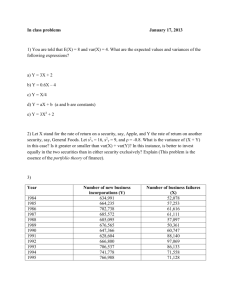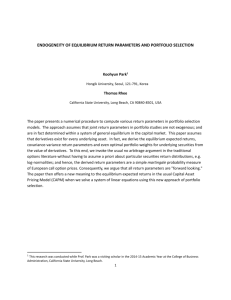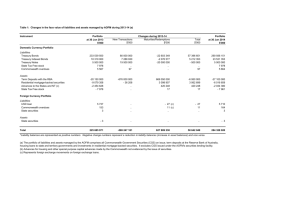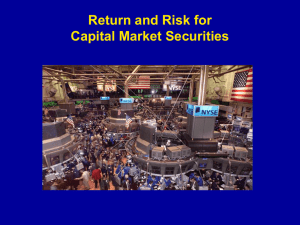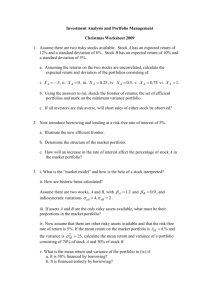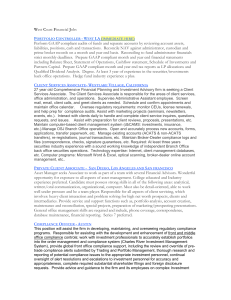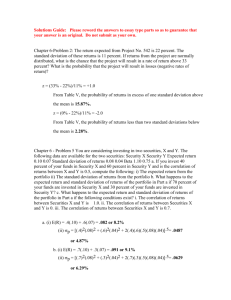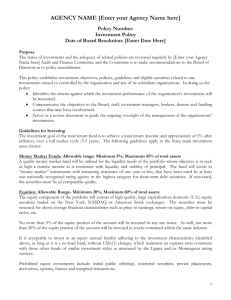adms3530_-_lecture_9_-_in
advertisement
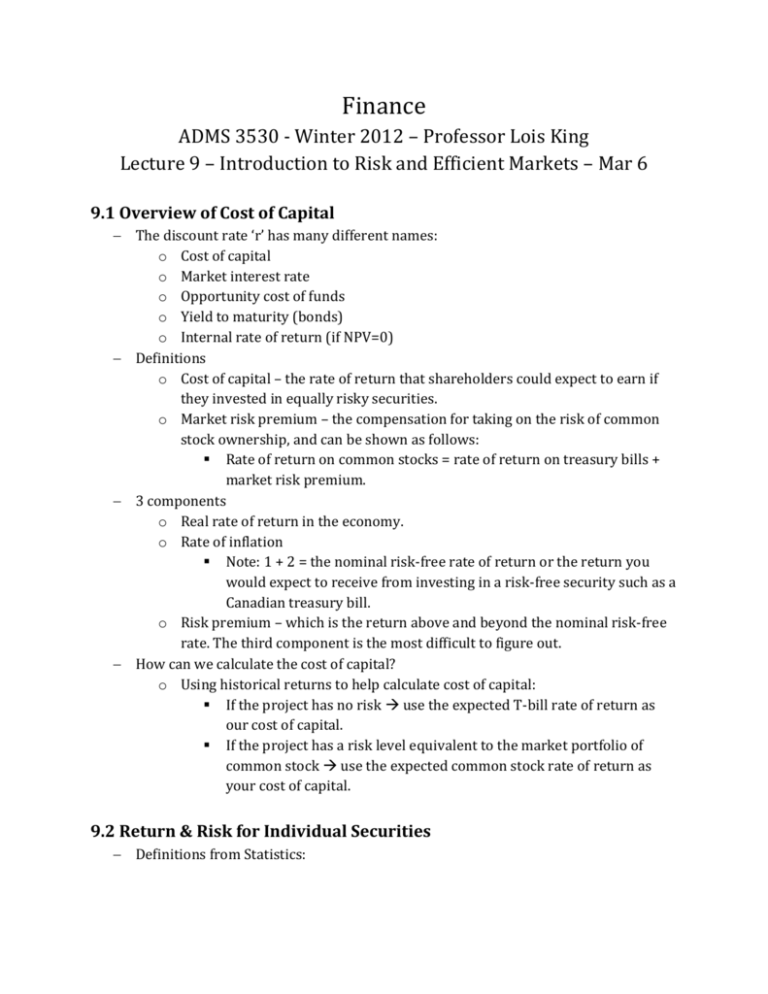
Finance ADMS 3530 - Winter 2012 – Professor Lois King Lecture 9 – Introduction to Risk and Efficient Markets – Mar 6 9.1 Overview of Cost of Capital The discount rate ‘r’ has many different names: o Cost of capital o Market interest rate o Opportunity cost of funds o Yield to maturity (bonds) o Internal rate of return (if NPV=0) Definitions o Cost of capital – the rate of return that shareholders could expect to earn if they invested in equally risky securities. o Market risk premium – the compensation for taking on the risk of common stock ownership, and can be shown as follows: Rate of return on common stocks = rate of return on treasury bills + market risk premium. 3 components o Real rate of return in the economy. o Rate of inflation Note: 1 + 2 = the nominal risk-free rate of return or the return you would expect to receive from investing in a risk-free security such as a Canadian treasury bill. o Risk premium – which is the return above and beyond the nominal risk-free rate. The third component is the most difficult to figure out. How can we calculate the cost of capital? o Using historical returns to help calculate cost of capital: If the project has no risk use the expected T-bill rate of return as our cost of capital. If the project has a risk level equivalent to the market portfolio of common stock use the expected common stock rate of return as your cost of capital. 9.2 Return & Risk for Individual Securities Definitions from Statistics: o Risk – An increased dispersion of possible outcomes. Where increased volatility => increased risk. o Variance – Probability-weighted average of squared deviations around the expected return. o Expected (or mean) return – Probability-weighted average of possible outcomes. Two types of variance: o Population variance – Includes all possible outcomes and probabilities are assigned. The divisor for population variance is ‘n’, versus ‘n-1’, as in sample variance. o Sample variance – Which is used to measure variance in stock returns and sample populations (no probabilities assigned as probabilities are not usually known). 9.3 Correlation & Diversification Volatility (as measured by variance or standard deviation) is a good measure of total risk of individual securities. However those measures (as calculated for individual securities) are not good for assessing the risk of a portfolio. Covariance of two securities: o The probability-weighted average of the product of each security’s difference from its mean, for each possible future event. o Covariance quantifies the degree to which securities, I and j vary together. Correlation coefficient: o Measures how closely two variables move together. o Is always a number between +1 and -1 +1 Means the two securities are perfectly positively correlated. -1 Perfectly negatively correlated. 0 no correlation – a change in one variable tells you nothing about likely change in other variable. o The correlation coefficient will thus tell you the incremental risk of adding a security to an existing portfolio of securities. If the correlation between the stock and the portfolio: o Highly positive (close to +1) Too little or no diversification benefit of the added stock. o Negative, Zero or lowly positive The addition of the stock lowers the portfolio standard deviation (lowers the risk!) Studies have shown that this diversification benefit tends to be maximized with between 20 and 30 stocks in a portfolio. 9.5 Market Risk versus Unique Risk Types of Risk: o Total risk – measured by Variance or Standard Deviation. Unique or Unsystematic Risk Can be diversified away. Caused by factors within a company’s operations (Debt levels, dividend yield, firm size, etc.) Market or Systematic Risk Non-diversifiable risk. Caused by macroeconomic factors (inflation, interest rates, GDP growth, etc.) Total risk of a portfolio is not; however, the weighted average of the standard deviations of the individual securities. For a portfolio of securities, we must analyze how each security’s returns vary with every other security in the portfolio. The correlation coefficient is a measure of how closely two variables move together. Diversification: o We can see from the analysis of randomly chosen stock portfolios that we can eliminate a great deal of risk by adding securities to a portfolio. o The additional benefits of adding securities diminishes after we have around 15 – 20 stocks in a portfolio. o As well, we cannot eliminate all risk. The risk that we cannot eliminate is called market risk or systematic risk whereas, The risk we can diversify away is called unique risk or unsystematic risk.
